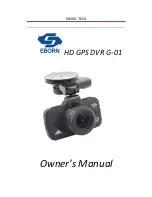
IL3 User’s Guide
11S-3002B
page 65
Eventually, the circular buffer will fill up and overflow, but when it does, it continues to keep the
newest images as it discards the oldest.
Referring back to Example 1 at the beginning of this section:
•
The camera is focused on the balloon.
•
It is recording images into its circular buffer.
•
The balloon pops.
The camera has captured the event, now you just need to make the camera stop before the images
are discarded. For this we use an
End Trigger
.
Note: In photography, the term “trigger” is often used in reference to the shutter--usually cameras are
triggered to take one image. In high-speed video capture, we use the term in reference to controlling
the acquisition of some (usually very large) number of video frames.
With the camera configured for an End Trigger the camera will fill its 20 frame circular buffer until
it gets a Trigger from the Trigger Button on the top of the TS3, from a Trigger signal received on the
Sync I/O connector, or from a software application. At that time it will Stop recording. The last frame
recorded will be given the number “0.” All previous Frames will be given sequential negative numbers.
Played back, the resulting video begins on frame -19, progresses to frame 0, then stops. If the camera
did not run long enough to fill its buffer, it would still stop when it received the trigger and the
resulting video would be shorter, starting with a less negative number (#-16 in the graphic below).
-2
-3
-6
-5
-7
-4
-8
-9
-10
-1
-11
-12
-1
3
-14
-15
-16
-l7
-18
-19
0
TRIGGER
AND St
op
!
-2
-3
-6
-5
-7
-4
-8
-9
-10
-1
-11
-12
-1
3
-14
-15
-16
0
TRIGGER
AND St
op
!
Shift
Shift
R
E
N
E
.
W
O
L
D
>
E
R
<
<
<
>
R
E
N
E
.
W
O
L
D
>
E
R
<
<
<
>
Figure 7-6:
Circular Buffer Fills and Images Shift Position
Figure 7-7:
Circular Buffer Overflowing
















































